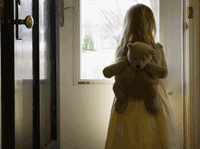Last updated 22 February 2015
The Children and Families Act 2014 became law in March 2014.
The act is wide-ranging, tackling everything from school meals to smoking in cars, but at its core lie significant – and controversial – changes to how adoption works and major reforms to improve the lives of looked-after children.
Here, Community Care takes a look at what it means for social services in England.
Advice on implementing the Children and Families Act
For more information on the Children and Families Act, see our quick guides and our legislative guide to the act on Community Care Inform Children.
Quick guide to young carers and parents caring for disabled children in the Children and Families Act 2014
Quick guide to special educational needs (SEN), disability and education in the Children and Families Act 2014
Quick guide to the parts of the Children and Families Act 2014 that apply in Wales
Quick guide to adoption measures in the Children and Families Act 2014
Quick guide to family justice in the Children and Families Act 2014
Legislative guide to the Children and Families Act 2014
Adoption placements
Probably the most fundamental change in the act, from a social work viewpoint, is the way it seeks to reshape the adoption system. The overriding goal, says the Department for Education (DfE), is to get children placed with adoptive families more quickly.
“Our adoption reforms will help the 6,000 children who need loving homes to be adopted,” said children’s minister Edward Timpson, who calls the changes “vital”.
Srabani Sen, chief executive of the British Association for Adoption & Fostering (BAAF), says the act marks a “major change” in how adoption will work in England. “The government’s aim is to increase the number of adopters and reduce the delays that adopters and children face in matching. I think there’s a real opportunity for the act to make real progress in this area.”
The act requires local authorities to consider placing children with family or friend carers in the first instance and, if that is not appropriate, to then try to place children in foster-to-adopt arrangements with their prospective adopters. More controversially, it repeals the requirement for councils to give ‘due consideration’ to children’s racial, religious, cultural or linguistic background when matching them with adopters.
The move is motivated by the government’s concern that this rule was causing Asian and black children to wait longer for adoption than white children, but BAAF is less than sure that this change will fix the problem. In its response to the measure, the charity argued there was little evidence to support the idea that the rule was the cause of these delays.
It also noted that the now-repealed measure was a “proportionate phrase”, i.e. it only asked social workers to consider these matters and so did not prevent matches with adoptive families that did not share the child’s own background.
While BAAF lost the argument in Parliament, the charity believes the consideration of these issues are still something that will be important during care planning and notes that the act does not prohibit councils from considering them. In essence, the legislation may have changed but that doesn’t necessarily mean that local authorities must change their policies.
The act also seeks to give approved adopters a bigger role in the matching process by giving them access to the Adoption Register, subject to “appropriate” safeguards. BAAF, which runs the Adoption Register, welcomes the idea. “The ethos of opening up the way the adoption process works is a very positive thing but the devil lies in the detail,” says Sen.
For now those details are unknown. Much will depend on the pilot of the new approach that BAAF and the DfE are now developing. “We will be doing a pilot of how we can make that adopter access work in the best possible way,” says Sen. “We’re still discussing that with government, but the principle is a very positive one that we’ve got to make sure works in a way that is in the best interests of children.”
It’s unknown whether the pilot will test the option, set out in the act, of charging adopters to access the register.
Finally, the act gives the DfE the power to require councils to outsource adopter recruitment to external agencies, opening the door for ministers to intervene when services are under-performing. Though this section was implemented in May 2014, the government must pass secondary legislation to enable it to direct local authorities to outsource their functions. This has not happened as yet.
The act’s drive to eliminate delay in adoption also extends to the family courts.
In particular the act enshrines the 26-week time limit on care proceedings, although does allow courts to extend this by up to 8 weeks if necessary to resolve the case justly.
The 26-week limit had been in use for several months prior to the act’s passage, having been introduced in last July’s Public Law Outline, but came into proper effect in April 2014, with the implementation of the first batch of the act’s measures.
Early evidence from the PLO showed that the time limit seemed to be having the desired effect, says Maud Davis, co-chair of the Association of Lawyers for Children. “The stats suggest the duration of care proceedings has reduced significantly, but we have to wait and see if there are any claims this has led to any significant injustice.”
This time limit is coupled with new rules that only permit the use of expert evidence in proceedings when it is necessary for a just outcome that is in the interests of the child.
This, says Davis, means the evidence presented in court by social workers and children’s guardians will be more crucial than ever. “It puts more pressure on social workers and guardians because the emphasis is on them as professionals who have expertise that the court is entitled to draw upon and, indeed, expects to draw on,” she says.
“If a social worker has reached a certain conclusion and you are unhappy with that conclusion and need expert evidence to suggest otherwise, then unless you can persuade a court that there is a gap in the social workers’ evidence, the only evidence before the court would be that of the social worker unless you have a guardian who disagrees.”
That, she says, suggests that both social workers and children’s guardians will need better training and support to ensure they can fulfil this enhanced role. “If we are asking social workers to be almost one of only two ‘experts’ in the case alongside the guardian they have got to have time to work the case because they are the people who end up in the witness box having to defend their opinion,” says Davis.
“They’ve got to be confident that they have done the work and amassed the evidence as it were to back up that opinion so that means being able to make visits, having long enough to read papers carefully, understand what is at issue and doing the practical social work to back up their opinions.
That is what should always happen and it is what any good social worker will want to do, but it’s a question of whether they’ve got the time and resources to do it. As such, it’s a concern doubts exist about independent reviewing officers’ ability to vet care plans, she says.
Adoption support
Not all the changes are about adoption placements. The act also introduces new rights for adoptive families to support and leave from work.
Adoption agencies are now required to inform adoptive parents about what adoption support services are available locally, their right to request an assessment for support, and what support councils are required to provide by law.
Local authorities are also required to provide adoptive families with personal budgets if they are asked to do so by the family.
Adoption leave is also being enhanced so that it matches the rights of birth parents from April 2015.
Changes include giving adoptive parents the right to share their parental leave to suit their own circumstances and a right to time off work to attend introductory appointments during the adoption process.
In line with the rights of birth parents, there will now be no qualifying period for adopters to have the right to take parental leave and they will be entitled to enhanced pay of 90% of their salary for the first six weeks off work.
These parental leave rights will also apply to foster-to-adopt arrangements and those who become parents via surrogacy arrangements.
Looked-after children
On the fostering front, the act’s headline grabber is the introduction of ‘staying put arrangements’ that allow young people to remain in foster care until their 21st birthday.
Local authorities are able to reject these arrangements if they believe they are not in the best interest of the young person, but when those arrangements are approved councils must provide advice, assistance and support, including financial help.
The new law also requires local authorities to appoint at least virtual school heads to promote the educational achievement of looked-after children.
The act also lays the legislative foundations for the government to develop new regulations and inspections of children’s homes.
It also bans people who have been disqualified from privately fostering a child from working in or having a financial interest in a children’s home in England.
Special educational needs
The act also introduces major changes to support for children and young people with special educational needs (SEN), creating education, health and care (EHC) plans to replace SEN statements.
EHC plans will need to reviewed regularly and cover people up to the age of 25 years old.
The basic goals are to give families a greater involvement in decisions about their support and to encourage social care, education and health services to work together more closely in supporting those with special needs or disabilities.
As part of the changes local authorities are required to publish a ‘local offer’ setting out what support is available to families with children who have disabilities or SEN. The local offer should also explain how families can request personal budgets, make complaints and access more specialist help.
The acts says families with EHC plans will be offered personal budgets and also places a duty on local authorities to identify all children in their area who have SEN or disabilities.
This part of the act came into force in September 2014.
Young carers
The Children and Families Act, in conjunction with the adults-focused Care Act, seeks to make sure young carers get the support they need.
Under the act, local authorities are expected to try and identify young carers so they can be offered support and both adult and children’s social services will need to work together on helping young carers.
Adult social care should be considering the needs of young people in the household when reviewing support for adults and children’s social workers should also do assessments in such situations.







 Assistive technology and dementia: practice tips
Assistive technology and dementia: practice tips  A trauma-informed approach to social work: practice tips
A trauma-informed approach to social work: practice tips 




 Find out how to develop your emotional resilience with our free downloadable guide
Find out how to develop your emotional resilience with our free downloadable guide  Develop your social work career with Community Care’s Careers and Training Guide
Develop your social work career with Community Care’s Careers and Training Guide  ‘Dear Sajid Javid: please end the inappropriate detention of autistic people and those with learning disabilities’
‘Dear Sajid Javid: please end the inappropriate detention of autistic people and those with learning disabilities’ Ofsted calls for power to scrutinise children’s home groups
Ofsted calls for power to scrutinise children’s home groups Seven in eight commissioners paying below ‘minimum rate for home care’
Seven in eight commissioners paying below ‘minimum rate for home care’
 Facebook
Facebook X
X LinkedIn
LinkedIn Instagram
Instagram
What is really behind the new Children and Families Act 2014?
An historical examination of child welfare policy in western liberal welfare states highlights that child welfare reforms are more often than not based on economic considerations and middle class ‘child saving’ endeavours. While presented as being in the ‘best interests of children’, parsimonious neo- liberal reforms, such as the Children and Families Act 2014, have at the heart, an emphasis on minimising a collective social responsibility for the care of children; rather, the aim is to place such care responsibilities back to the family or out to the market. Hence we see the emphasis on adoption as a privatised and familial solution to the care of children. The quicker the children are moved out of the system, the better, because it costs money to sustain the care of children whose parents are deemed unfit, unworthy and/or abusive.
Once such children have been rescued however, the Children and Families Act clearly shows that the neo-liberal state is a reluctant parent – evidenced by the plan to pass the responsibility of finding adoptive families out to the private sector. As well as being another example of passing the buck to save money, the dangers of such an approach can be illustrated by taking a look at the huge adoption industry in the US, which puts profit before the care of children and their families and opens the way for potential abuse of the system.
Moreover, the adoption market and the desires of adopting parents become prioritized over the needs of natural parents and their children. Research shows that adopting parents are economically privileged in contrast to the families who supply the children for the adoption market. Important to note is that the international market and the child protection routes are now the main suppliers of children for adopting parents in western liberal states. Such potential parents have a powerful voice in advocating and lobbying for change to make adoption quicker and easier. In contrast, natural parents coming to the attention of child welfare authorities are overwhelmingly from working class, racialised, and economically deprived backgrounds, and have less political, cultural and economic power to contest. As well, the child protection system is gendered, with mothers over represented and the trauma arising from the loss of their children silenced by shame, stigma and oppression.
We only have to look at the injustices of the past to see how child welfare legislation masterminded by privileged middle class reformers devastates working class and racialised children and their families: For example, the immigration of children from the United Kingdom to Canada and Australia in the early and mid-twentieth century, the “forced adoptions” and incarceration of ‘unwed mothers’ in maternity homes during the post-World War II era, and the “stolen generations” of Indigenous children, in Canada, Australia and New Zealand, through colonial child welfare legislation designed to assimilate and obliterate the ‘uncivilized.’
Such injustices call attention to the fact that child welfare reforms are not neutral pieces of legislation. Legislation such as the Children and Families Act 2014 is historically, culturally, and economically specific and should be critically examined for its potential for harm and trauma perpetuated in the name of ‘best interests of children.’ Rather than devising such ‘cost saving’ legislation, child welfare reforms should address the ever increasing inequalities perpetuated by neo-liberal economic policies, which blame and stigmatize the poor. In contrast, an analysis of child welfare that incorporates an ethic of care would ask the following question: Why are there so many poor, working class and racialised children in the care system in the first place and what can be done to redistribute wealth and opportunity in order that such children and their families can flourish and live well?